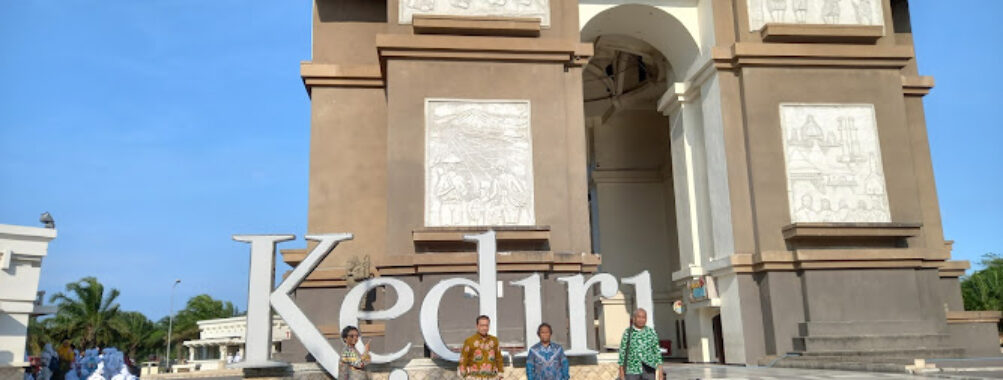
Kediri
Table of Contents Kediri, a historic city in Kediri Regency, East Java, Indonesia, is the kind of place that sneaks up on you. At first glance, it may seem like just another small city on Java Island—but give it a moment, and you’ll see its charm unfold bit by bit. It’s located near the Brantas River, which meanders gracefully through the city, giving Kediri both its character and its fertile surroundings. For travelers who like history, local culture, and food that feels homemade, Kediri offers layers to discover. This area once served as the capital of the Kediri Kingdom—a powerful empire that ruled much of Java during the 11th and 12th centuries. You can still feel echoes of that ancient heritage today, especially when visiting Tondowongso or the Simpang Lima Gumul Monument, a modern-day landmark that pays subtle homage to the city’s royal past. I remember my first stroll there—the mix of old and new reminded me a lot of how Java itself feels in general: deeply traditional, yet not afraid to evolve. The city Kediri is also known across Indonesia for its cigarette industry—yep, Gudang Garam, one of the nation’s largest corporations, calls it home. That means there’s a surprising amount of economic activity tucked behind its humble appearance. But it’s not all business here. Small food stalls, coffee cafes, and friendly locals who seem to know every corner of their neighborhood add warmth and authenticity that can be hard to find in larger, more tourist-heavy cities in East Java. And while Kediri may not be on every traveler’s radar, its authenticity alone makes the trip worth it. If you’re thinking of timing your travel right, Kediri’s dry season—usually from May to September—is the most comfortable for sightseeing. The skies stay clear, and Mount Kelud looks crisp from a distance. You can explore temples, stroll along the Brantas River, or visit traditional street food vendors without worrying about those sudden tropical rains that like to surprise you in the wet months. That said, the rainy season (November to March) brings its own sort of calm, painting the city’s landscapes in deeper greens. I’ve been there during the heavy rains once—it was oddly peaceful watching the downpour from a small warung while sipping hot kopi tubruk (strong local coffee). So, if you don’t mind a little rain, you might enjoy that atmosphere too. Festivals usually peak between August and October, which adds an energetic pulse to the city. Traditional parades, gamelan performances, and ceremonies happen on various days, and even locals dress in classical Javanese costumes. Be prepared for crowds, though—they may not be tourist-heavy, but the local turnout is strong and proud. Kediri is quite accessible compared to what you might think. Many travelers arrive from Surabaya, the capital of East Java province, roughly 120 kilometers away. The most common route is by train—it’s reliable, scenic, and usually on time. The journey cuts across beautiful parts of Java, showing the countryside at its best. If you enjoy longer drives, you can reach Kediri by car or private driver in about three to four hours depending on traffic. Buses also operate regularly from various East Java cities like Malang, Blitar, and Tulungagung. To be honest, I prefer traveling by train—it’s something about the rhythmic hum and open views that make you feel the pace of rural Indonesia. Plus, the Kediri train station sits conveniently near the city center, making it easy to find accommodations and restaurants within minutes. Once you’ve arrived, local “angkot” minibuses and motorcycle taxis are the usual ways to move around. They may not always stick to schedules (who does in small cities, anyway?), but they keep the trip fun and spontaneous. Just remember to carry some cash, as digital payments still have limited reach in certain areas. First off, take your time. Kediri isn’t a place to rush through. It rewards slow travel and casual conversations with locals. People here are open, often eager to share stories or offer directions even if their English is limited. It’s one of those destinations where human connection feels genuine, not performative. Don’t expect flashy tourist infrastructures, but that’s honestly part of its charm. Here are some practical and some slightly personal tips: It’s also worth saying that Kediri, despite being one of Indonesia’s older cities, has a surprising amount of youthful energy. You’ll notice art collectives, student groups, and small creative hubs slowly emerging. The city’s creative economy is growing quietly—but confidently. If you like exploring spots where traditional meets new, Kediri will likely leave an impression that lasts well beyond your trip. To sum it up—if your heart leans more toward authentic experiences than tourist checklists, Kediri in Kediri Regency, East Java, Indonesia is a rewarding choice. It’s a city that tells its story subtly: through food, history, laughter, and everyday rhythm rather than through grand displays. And maybe that’s what makes traveling there feel so real. You don’t just visit Kediri—you feel its heartbeat as you sip that last cup of coffee overlooking the Brantas River, wondering why you didn’t come sooner.Description
Key Features
Best Time to Visit
How to Get There
Tips for Visiting
Location
Places to Stay Near Kediri
Find and Book a Tour
Explore More Travel Guides
No reviews found! Be the first to review!